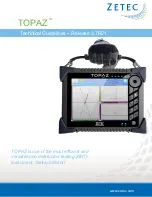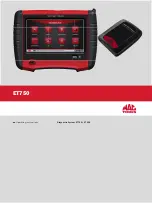
5. Operating Hints
Response Level Adjustment
The ST7000 has three response levels which enable
tighter course keeping to be achieved in certain cases:-
Level 1 - Automatic Sea State Control
Level 2 - Automatic Sea State Inhibit Level 3 - Automatic
Sea State Inhibit and counter rudder.
When the autopilot is switched on, the response level
is set to 1. This provides the best compromise between
power consumption and course keeping accuracy and is
suitable for nearly all situations.
Increasing Response level provides tighter course
keeping at the expense of increased power
consumption and general wear and tear. It is advisable
to use the minimum response level necessary to
achieve the desired course keeping accuracy. On
larger power vessels level 3 can improve slow speed
steering where the natural yaw damping of the vessel is
reduced.
Note:
Level 3 is not recommended for use at planing
speeds or in rough seas.
Track
To make full use of Track control the following simple
points should be observed:-
•
Always steer the vessel to within 0.1
nm of track and
bring the heading to within 5 deg. of the bearing to
the next waypoint before selecting Track.
•
Always check that there are no navigational hazards
either side of the intended track.
•
Always maintain an accurate log with regular plots
to verify the computed position read from the Radio
Navigation Receiver. Maintain a proper lookout at
all times.
Waypoint Advance
if the navigation receiver is transmitting the waypoint
number to the ST7000 the waypoint alarm will sound
whenever a new target waypoint is selected (see Page
8). When the alarm is sounding the ST7000 will
maintain the current heading and automatic track control
is suspended. Check the displayed new bearing to
waypoint and when it is safe to turn onto it, resume
automatic track control by simply
pushing
Track.
This accepts the new target waypoint
and will steer the vessel onto the new bearing to
waypoint.
The tidal offset may be very different on the new
bearing, and it is good practise to check the cross track
error after a couple of minutes. If the cross track error
continues to increase make a course adjustment of say
10 degrees in the direction of the arrow. This will help
the Track control correct more quickly for the new tidal
vector.
Automatic Trim
If Automatic Trim has been selected during calibration
the ST7000 will correct for trim changes. This correction
can take up to one minute to apply the rudder offset
necessary to restore the set automatic heading. Large
course changes which change the apparent wind
direction can produce large trim changes. In these
cases the autopilot will not immediately assume the new
autoitiatic heading, and only seftle onto course when the
Automatic Trim has been fully established.
To minimise the inherent time delay the following
procedure may be adopted for large course changes.
•
Note required new heading.
•
Select
Standby
and steer manually.
•
Bring vessel onto new heading.
•
Select
Auto
and let vessel settle onto course.
•
Bring to final course with 1 deg. Increments.
It is sound seamanship to make major course changes
only whilst steering manually. In this way any
obstructions or other vessels may be cleared properly
and due account taken of the changed wind and sea
conditions on the new heading prior to engaging the
autopilot.
Rudder Gain
The rudder gain level selected during initial sea trials will
normally provide excellent steering performance over a
wide range of conditions. However, it may be noticed
that the autopilot tends to be a little less stable on
northerly headings in the higher latitudes of the Northern
hemisphere (and conversely southerly headings in the
Southern hemisphere). This is caused by the increasing
angle of dip of the earth's
11






































